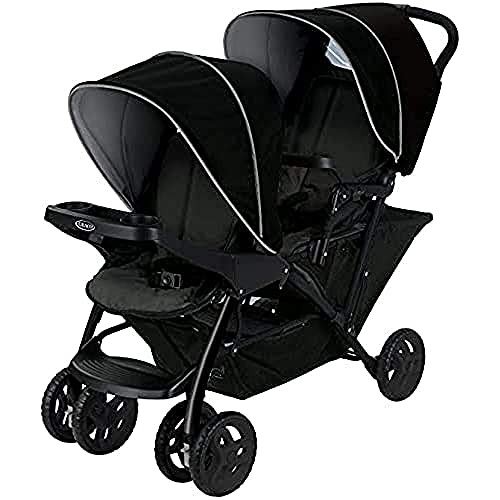Why You Should Focus On Improving Pram
Pram and Pushchair Travel System: A Comprehensive Guide for Parents
As moms and dads start the interesting journey of inviting a new kid, selecting the ideal travel system can be a complicated task. Cheap Travel System Prams and pushchair travel system has acquired tremendous popularity in recent years for its combination of convenience, safety, and flexibility. This post explores the complexities of prams and pushchairs, checks out the advantages of these travel systems, and offers practical recommendations for potential moms and dads.
Understanding Travel Systems
A travel system usually integrates a stroller (or pushchair) with a carrycot (or pram) and a baby safety seat. This combination allows parents to transition seamlessly in between strolling and driving without disrupting their sleeping babies.
Elements of a Travel System
Element
Description
Pram
Created for infants, a pram supplies a flat, comfortable space for the baby to rest. Ideal for newborns until they can sit up.
Pushchair
A stroller developed for older infants and toddlers, featuring a reclining seat that allows babies to sit upright as they grow.
Safety seat
A safety seat that can be quickly clicked into the frame of the stroller or pram, permitting safe travel in between automobile and street.
Benefits of Using a Pram and Pushchair Travel System
Choosing a pram and pushchair travel system has numerous advantages that interest modern-day parents. Here are some of the essential benefits:
Convenience
- One total system makes it simple to change from cars and truck to stroller without inconvenience.
- Decreases the need to wake a sleeping baby.
Cost-Effectiveness
- Purchasing a travel system can be more cost-effective than buying each component separately.
Security
- Travel systems are created to make sure that cars and truck seats are securely attached to the stroller, lessening the threat of accidents.
Adaptability
- Many travel systems provide adjustable features, including reclining seats and removable covers, enabling them to adjust as the child grows.
Space-Saving
- Travel systems are compact and can typically fit easily in the trunk of an automobile.
Selecting the Right Pram and Pushchair Travel System
When choosing the best travel system, here are some factors to think about:
1. Age and Size of the Baby
- Choose a pram function for newborns.
- Guarantee that the pushchair can accommodate development, particularly in regards to weight and height limitations.
2. Security Features
- Look for features like a five-point harness, brakes, and stability.
- Look for security accreditations.
3. Weight and Portability
- Think about how heavy the system is and whether it's simple to fold and lift.
- A light-weight system tends to be more workable, specifically for parents browsing public transport.
4. Alleviate of Use
- Look for user-friendly systems, such as simple fold-and-unfold operations or how quickly the car seat can be protected.
5. Terrain Compatibility
- Recognize the kinds of surfaces where the system will be utilized most. Some strollers perform much better on turf or rough surface than others.
6. Spending plan
- Determine your budget ahead of time. Travel systems can range from cost effective to high-end designs.
Maintenance Tips for Travel Systems
To ensure durability and safety, it's necessary to preserve your travel system appropriately. Here are some maintenance ideas:
- Regular Cleaning: Wipe down the stroller after every use and tidy the fabric routinely.
- Check for Wear and Tear: Routinely check the wheels, brakes, and harness for any damage.
- Follow Manufacturer Guidelines: Pay attention to standards on assembly, use, and storage.
- Storage Considerations: Store the travel system in a dry place to prevent mildew and damage.
Frequently asked questions About Pram and Pushchair Travel Systems
1. How soon can I begin using a travel system?
The majority of travel systems can be used from newborn phase, but constantly check the maker's guidelines.
2. Can I use a safety seat from a different brand with my travel system?
Typically, it's encouraged to utilize components from the same brand name for security compatibility, but some systems may permit universal safety seat.
3. Are travel systems heavy?
Weight differs by model. Finding a balance between toughness and light-weight designs is vital.
4. At what age should I change from a pram to a pushchair?
The majority of babies are prepared to transition once they can sit up separately, generally around 6 months of age.
5. How do I clean my travel system?
The majority of travel systems feature detachable and washable covers. For frames, a moist fabric generally is adequate.
Navigating the world of baby equipment can be a complicated experience for brand-new moms and dads. The pram and pushchair travel system offers a perfect option for those seeking convenience, security, and adaptability. By comprehending the parts, benefits, and features to consider, parents can make educated choices that suit their lifestyle and their child's requirements. With extensive research and thoughtful factor to consider, picking the best travel system becomes a manageable task, permitting parents to welcome the delights of being a parent with ease.
